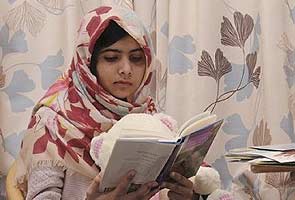Little School Girls Biography
Source(google.com.pk)
Ethel Mary Turner (1870-1958), author, was born on 24 January 1870 at Balby, Yorkshire, England, second child of Bennett George Burwell, commercial traveller, and his wife Sarah Jane, née Shaw (d.1923). Burwell died in Paris in Ethel's infancy; on 21 August 1872 in the register office, Yarmouth, Sarah Jane Shaw married Henry Turner, a widower with six sons; they were to have a daughter Jeannie Rose (b.1873). Ethel and her elder sister Lillian Wattnall Burwell (1867-1956) took their stepfather's name and were known by it throughout their professional careers. Turner, a factory manager, fell into financial difficulties and left only £200 when he died at Coventry in August 1878.
Next year Mrs Turner migrated with her daughters to Sydney. On 31 December 1880 she married Charles Cope, a clerk in the Department of Lands and brother of William Cope; their son Charles Rex completed the three-level family. Ethel Turner's autobiographical novel, Three Little Maids (1900), describes her mother's struggle to maintain her family in genteel poverty and presents the third marriage as a means of rescue.
Ethel and Lilian were educated at Sydney Girls' High School where they ran their own magazine, the Iris, in opposition to the Gazette, edited by Louise Mack. In January 1889, after Ethel left school, the sisters founded and co-edited a sixpenny monthly, the Parthenon, which lasted for three years until its printers, Gordon & Gotch, were sued for libel; the magazine sold about 1500 copies a month and made about £50 annually for its editors. Ethel contributed the 'Children's Page' and serial romances for adults: both she and Lilian planned to become novelists. In 1893 Ethel published a story in the Bulletin and was earning £100 a year as editor of the 'Children's Page' of the Illustrated Sydney News. The paper folded next year, but as 'Dame Durden' she edited the 'Children's Page' in the Australian Town and Country Journal until it ceased publication in 1919.
For diversion from a more ambitious work, she wrote her first children's book, Seven Little Australians. On the recommendation of William Steele, Melbourne representative of the English firm of Ward, Lock & Bowden, it was published in London in 1894. The first edition sold out in weeks and 'Ethel Sibyl Turner' (as she styled herself) was launched as a children's writer.
The Sydney suburban setting, the quiet comedy, the refusal to idealize family life and the insistence on the distinctive nature of Australian childhood experience set Seven Little Australians apart from its contemporaries. Although the novel shows the influence of Charlotte Yonge's The Daisy Chain (1856) and Louisa May Alcott's Little Women (1868), it reverses the literary conventions of these works. When its heroine, the rebellious Judy Woolcot, dies after a ring-barked tree falls on her, there is none of the customary religious consolation for a young life cut short. The irascible Captain Woolcot (a version of Turner's stepfather Charles Cope) never becomes a model father; the other Woolcots remain imperfect; and, while the family fortunes vary, they do not essentially change. The domestic realism is sustained in the second Woolcot novel, The Family at Misrule (1895).
Deploring the 'free and easy, somewhat rowdy associations due to [the Australian] atmosphere, climate, environment and the influence of The Bulletin', in 1895 Steele urged Ethel Turner to consolidate her reputation by spending some time in English literary circles. She refused to leave Sydney and delay her wedding to the young barrister Herbert Raine Curlewis (1869-1942), to whom she had been unofficially engaged for four years. They were married at St John's Anglican Church, Gordon, on 22 April 1896.
Herbert was born on 22 August 1869 at Bondi, eldest son of native-born parents Frederick Charles Curlewis, brickmaster, and his wife Georgina Sophia, née O'Brien. Educated at Newington College and the University of Sydney (B.A., 1890; LL.B., 1892), he was admitted to the Bar on 17 March 1893; practising mainly in common law, after an early struggle he prospered. Curlewis had some literary talent and, as a student, wrote Latin and Greek verses and some love poems dedicated to Ethel Turner. In The Mirror of Justice (1906), a layman's introduction to legal process, he emphasized the human interest of the courtroom as well as the intricacies of the law. He edited the Australasian Annual Digest of leading decisions in 1905-15 and lectured on the law of procedure, evidence and pleading at the university in 1911-17. Fluent in Italian and a member of the (Royal) Australian Historical Society, he was also attracted by anything mechanical. Appointed a judge of the Industrial Arbitration Court in 1917, he became District Court judge on 1 July 1928. He earned a reputation for severity, especially for his insistence that correct English should be spoken in the cases over which he presided. Curlewis retired in 1939.
















Next year Mrs Turner migrated with her daughters to Sydney. On 31 December 1880 she married Charles Cope, a clerk in the Department of Lands and brother of William Cope; their son Charles Rex completed the three-level family. Ethel Turner's autobiographical novel, Three Little Maids (1900), describes her mother's struggle to maintain her family in genteel poverty and presents the third marriage as a means of rescue.
Ethel and Lilian were educated at Sydney Girls' High School where they ran their own magazine, the Iris, in opposition to the Gazette, edited by Louise Mack. In January 1889, after Ethel left school, the sisters founded and co-edited a sixpenny monthly, the Parthenon, which lasted for three years until its printers, Gordon & Gotch, were sued for libel; the magazine sold about 1500 copies a month and made about £50 annually for its editors. Ethel contributed the 'Children's Page' and serial romances for adults: both she and Lilian planned to become novelists. In 1893 Ethel published a story in the Bulletin and was earning £100 a year as editor of the 'Children's Page' of the Illustrated Sydney News. The paper folded next year, but as 'Dame Durden' she edited the 'Children's Page' in the Australian Town and Country Journal until it ceased publication in 1919.
For diversion from a more ambitious work, she wrote her first children's book, Seven Little Australians. On the recommendation of William Steele, Melbourne representative of the English firm of Ward, Lock & Bowden, it was published in London in 1894. The first edition sold out in weeks and 'Ethel Sibyl Turner' (as she styled herself) was launched as a children's writer.
The Sydney suburban setting, the quiet comedy, the refusal to idealize family life and the insistence on the distinctive nature of Australian childhood experience set Seven Little Australians apart from its contemporaries. Although the novel shows the influence of Charlotte Yonge's The Daisy Chain (1856) and Louisa May Alcott's Little Women (1868), it reverses the literary conventions of these works. When its heroine, the rebellious Judy Woolcot, dies after a ring-barked tree falls on her, there is none of the customary religious consolation for a young life cut short. The irascible Captain Woolcot (a version of Turner's stepfather Charles Cope) never becomes a model father; the other Woolcots remain imperfect; and, while the family fortunes vary, they do not essentially change. The domestic realism is sustained in the second Woolcot novel, The Family at Misrule (1895).
Deploring the 'free and easy, somewhat rowdy associations due to [the Australian] atmosphere, climate, environment and the influence of The Bulletin', in 1895 Steele urged Ethel Turner to consolidate her reputation by spending some time in English literary circles. She refused to leave Sydney and delay her wedding to the young barrister Herbert Raine Curlewis (1869-1942), to whom she had been unofficially engaged for four years. They were married at St John's Anglican Church, Gordon, on 22 April 1896.
Herbert was born on 22 August 1869 at Bondi, eldest son of native-born parents Frederick Charles Curlewis, brickmaster, and his wife Georgina Sophia, née O'Brien. Educated at Newington College and the University of Sydney (B.A., 1890; LL.B., 1892), he was admitted to the Bar on 17 March 1893; practising mainly in common law, after an early struggle he prospered. Curlewis had some literary talent and, as a student, wrote Latin and Greek verses and some love poems dedicated to Ethel Turner. In The Mirror of Justice (1906), a layman's introduction to legal process, he emphasized the human interest of the courtroom as well as the intricacies of the law. He edited the Australasian Annual Digest of leading decisions in 1905-15 and lectured on the law of procedure, evidence and pleading at the university in 1911-17. Fluent in Italian and a member of the (Royal) Australian Historical Society, he was also attracted by anything mechanical. Appointed a judge of the Industrial Arbitration Court in 1917, he became District Court judge on 1 July 1928. He earned a reputation for severity, especially for his insistence that correct English should be spoken in the cases over which he presided. Curlewis retired in 1939.
Little School Girls Photos Wallpapers Images Pics Collections

Little School Girls Photos Wallpapers Images Pics Collections

Little School Girls Photos Wallpapers Images Pics Collections

Little School Girls Photos Wallpapers Images Pics Collections

Little School Girls Photos Wallpapers Images Pics Collections

Little School Girls Photos Wallpapers Images Pics Collections

Little School Girls Photos Wallpapers Images Pics Collections

Little School Girls Photos Wallpapers Images Pics Collections

Little School Girls Photos Wallpapers Images Pics Collections

Little School Girls Photos Wallpapers Images Pics Collections

Little School Girls Photos Wallpapers Images Pics Collections

Little School Girls Photos Wallpapers Images Pics Collections

Little School Girls

Little School Girls Photos Wallpapers Images Pics Collections

Little School Girls Photos Wallpapers Images Pics Collections

Little School Girls Photos Wallpapers Images Pics Collections

No comments:
Post a Comment